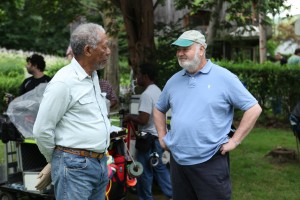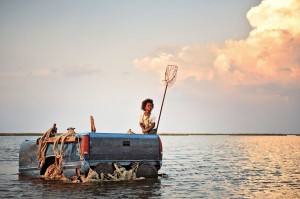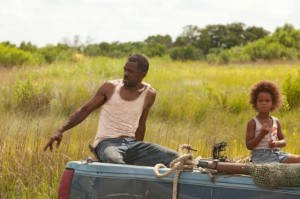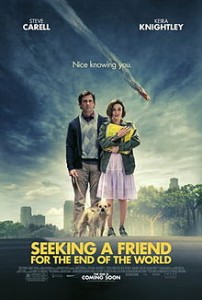Interview: Rob Reiner of “The Magic of Belle Isle”
Posted on June 27, 2012 at 8:00 am
Rob Reiner (“The Princess Bride,” “When Harry Met Sally…,” “The American President”) is co-writer and director of the heartwarming new film, “The Magic of Belle Isle.” Morgan Freeman plays a bitter wheelchair-bound writer who moves to a small town and is befriended by a single mother (Virginia Madsen) and her three daughters. Reiner spoke to me about why this story was so important to him and the challenges of shooting on a very low budget. It is available now On Demand and will be in theaters July 6.
Tell me why you chose this project.
When I turned 60 a few years ago, I started thinking more and more about my mortality—that’s what happens when you get older. I thought of myself as a very, very, very young old person, like the beginning of old age. You start thinking about how finite your life is and how it becomes more precious, and that led me to wanting to make “The Bucket List.” No matter what your situation is, you try to find a way to enjoy your life and live it the best you can until you die. It was very similar when we got this script, it came in as a spec script and when I read it I thought, “Wow, this is also about a guy who has basically given up on life, he’s in a wheelchair, his wife just passed away, he can’t write any more and he’s drinking, and he basically shut the door on himself.” I love the idea of moving into this lakeside community for the summer and over the course of the summer his interactions with the woman next door and her children and the people in the town make him learn how to live again. I love this whole idea that no matter what your situation is, you have to find a way to celebrate life.
I like that too, and I like the fact that the movie has a lot of really nice people in it. It’s so easy to make everyone crabby.
There’s a speech that Morgan gives early on at this memorial service for one of the townspeople where he says, “You know, there’s something about this place that brings out the best in people.” The speech was written by the Fred Willard character, but he has Morgan say it. That’s why we call the movie “The Magic of Belle Isle,” because it’s all about how these people from this community interact with each other and do bring out the best in each other.
Fred Willard is one of my absolute favorites, and I was so delighted to see him in it.
He’s brilliant, he’s a great improvisational actor, he was in “Spinal Tap” and the Chris Guest movies, which have a lot of improvisation So he gave me a few freebies—that’s what I love about Fred. When Morgan comes to the memorial service, he says, “I brought the Cheetos” and Fred goes, “Nice touch…” He ad-libbed that! Not everybody can improvise the way he does, but when you hire him, you know you’re going to get a lot of freebies.
Tell me about working with Virginia Madsen and how she developed such a natural relationship with the girls who played her daughters.
I’m going to credit Virginia for a lot of that because she took it upon herself to spend a lot of time with the girls when they weren’t working. She really took it upon herself to make a family out of them and make them feel like she was their mother, and so I give her a lot of credit for that. I’ve always wanted to work with her in a bigger capacity than I did when I did “Ghosts of Mississippi” and this was a great opportunity. She brought so much to this movie. She actually changed the ending of the movie because she did something that wasn’t in the script when they’re about to say goodbye on the porch at the end of the summer; in the script it just called for her to give him a little peck on the cheek, kind of a chaste kiss and she felt like her character had evolved to a point where, even though she had shut down emotionally and was going through a divorce and didn’t see herself getting romantically involved with anybody, this man had brought out all these feelings in her, had re-stimulated these feelings in her. So, when she gives him that big, passionate, romantic kiss, Morgan’s reaction is very much the way I reacted, “Whoa! I didn’t see that coming!” And she said, “Well, if you want, we can do it the way it is in the script,” and I said, “No, you know something? I think you’re right, I think your instinct is right. I know it ups the stakes of this movie but I think it’s the right thing,” and it made us have to change the ending of the movie, which is that he comes back. Initially, he was just going to drive off and leave them.
You always have a real gift, I think, in your musical choices for your movies. Do you want to talk a little bit about the music in this?
Mark Shaiman did the music again like he’s done for so many of my movies. Ever since we did “When Harry Met Sally” together, he’s worked on every one of my films. He’s terrific and he’s incredibly versatile, and it was his idea at the end to bring back the Beethoven piece. We had a piece of score, but he said, “No, no, we’ve got to bring back the Beethoven piece there!” And also using that kind of Dobro blues guitar was also something that we worked on together. I love working with Mark because he’s incredibly versatile, he can do any type of movie.
Was there anything in making the movie that was tougher than you expected?
Initially I thought it was going to be very hard to shoot it in 25 days because we only had 5 million dollars. It was a small budget and a very short schedule, but I was very lucky because I had Morgan Freeman and Virginia Madsen, who are incredibly gifted, have great craft, and are able to nail it right away so we could move on very quickly, and that’s the way I love to work. If we get it right the first time, let’s move onto the next thing, and so that turned out to be okay. The bigger challenge was because we had such a small budget, we didn’t have enough money to buy two wheelchairs, and there was only one wheelchair. The only place that made that wheelchair was a factory in China and at one point, the wheelchair broke down, and we literally had to call the factory in China and have it Fed-Exed to America and wait a day to get it. That was a little bit of a nerve-wracking thing, but other than that we had a lot of rain and stuff, so we had to jump in and out of the houses, but we dodged rain drops and it was okay. It was the most glorious summer there and I had the greatest time. It was like summer camp, like movie camp.
What do you want people to take away from this film?
I want them to take away the similar feeling that they had when they saw “Bucket List,” which is that you live life and—unless you’re Shirley MacLaine—you only get this one life, so you’ve got to live it to the fullest. You have to celebrate it every step, no matter what your situation in life, you have to find a way to celebrate it.



